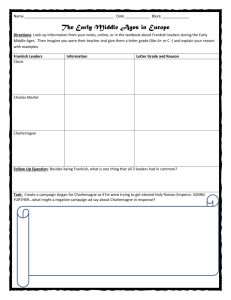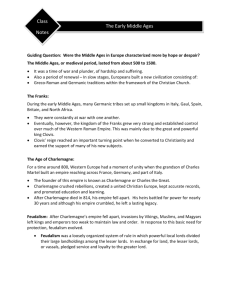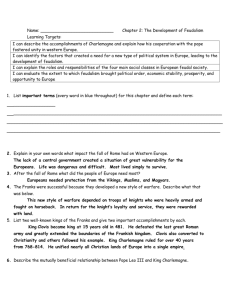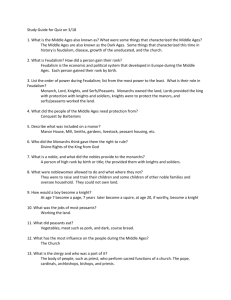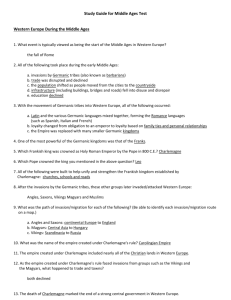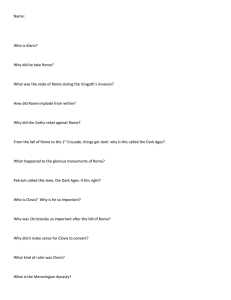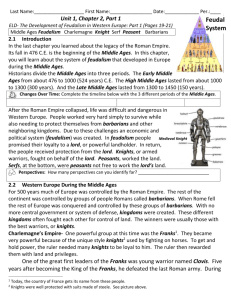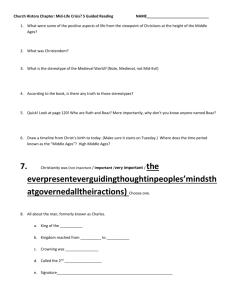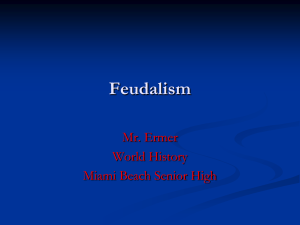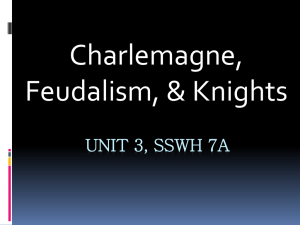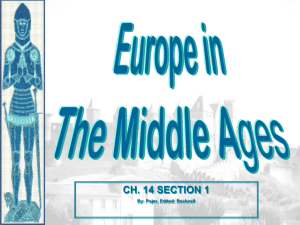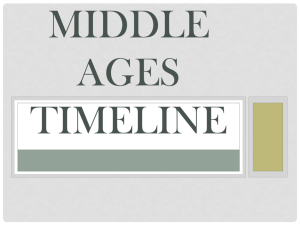The Development of Feudalism in Western Europe
advertisement
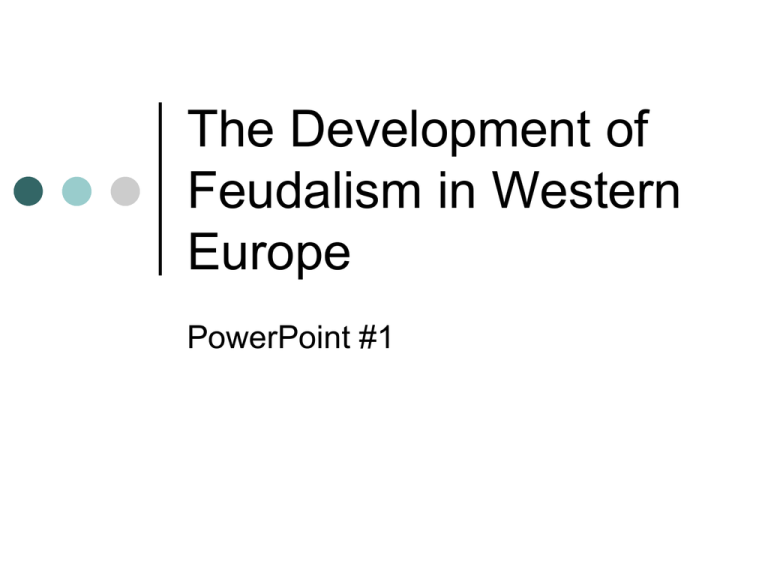
The Development of Feudalism in Western Europe PowerPoint #1 The Middle Ages Three time periods Early Middle Ages 476-1000 The High Middle Ages 1000 – 1300 The Late Middle Ages 1300 - 1450 The Early Middle Ages Began with the fall of the Roman Empire The Roman Empire had ruled much of Europe for 500 years – barbarians controlled the rest of the continent After the fall life was dangerous and difficult People had to work hard to have enough to eat Needed to protect themselves from invaders Feudalism Many invading groups set up kingdoms and were often at war with one another Resulted from the difficult living situations in Europe Political system where people pledge their loyalty to a lord Clovis Franks were a powerful group that eventually took over a large part of Europe Fought with knights in armor on horseback Clovis was one of the first leaders Was a successful warrior Became king of the Franks at age 15 in 481 Ruled for 30 years Widened the boundaries of the Frankish kingdom Clovis and Christianity Married Clotilda a Catholic woman Was baptized in to the Roman Catholic Church Many people also became Catholic Charlemagne Most important Frankish leader Ruled from 768 to 814 Was 6’4” tall (tall for the time) – stately and dignified Could not read or could read very little Had scholarly works read to him Encouraged education – made his court a center of culture Rewarded knights with land and privileges Unified nearly all the Christian lands of Europe Was called “King Father of Europe” Pope Leo III and Charlemagne Charlemagne had the help of Pope Leo III Church was central part of society The blessing of the Church sent the message to the people “God is on my side” Leo needed the support of someone with an army Pope crowned Charlemagne the Holy Roman Emperor in 800 Empire survived many barbarian attacks Charlemagne died in 814 Empire fell apart Weak rulers could not hold off invaders Ninth and tenth Centuries Western Europe was threatened by three groups Muslims from the middle east and northern Africa Magyars – a central Asian people from the east Vikings swept down from present day Norway and Denmark Vikings Terrifying raids on towns and villages Came in shallow boats carrying swords and axes Killed and took prisoners People of western Europe needed a way to defend and protect themselves Monarchs Believed in the divine right of kings the idea that God had given them the right to rule Some had to work hard to keep control Most did not have enough money to keep their own army In early middle ages the nobles or lords grew very powerful and governed as independent Monarch was little more than a figurehead and had no real power English Monarchs Monarchs were quite strong in England during the Middle Ages Vikings had invaded and settled in England By mid 11th century, this area was ruled by a powerful Germanic group called the Saxons The king was a descendant of both the Saxon and Norman (French) families He died without an adult heir William, the powerful Duke of Normandy (present day France) believed he had the right to rule England crowned his cousin Harold In 1066 William invaded England and defeated Harold in what is known as the battle of Hastings A line of Norman Kings ruled England William became known as William the conqueror Brought feudal institutions from Europe with him Lords Rulers or powerful land owners In return people received protection from the lord Knights Armed warriors who fought on behalf of their lord Peasants Worked the land Serf a peasant that was not free to leave the Lord’s land Establishing Order By High Middle Ages feudalism provided the needed protection and safety and social order People were bound to one another by pledges of loyalty In theory all the land in the kingdom belonged to the monarch – king or queen fiefs Land granted by the kings to the most important lords who became his vassals In return the lords promised to supply the king with knights Manors Large estates where lords and wealthier knights lived Located in the country far from towns Included castle or manor house One or more villages Surrounding farmland Peasants Had to produce everything needed in the manor Social Class People were born into it Had same position and job as their parents
